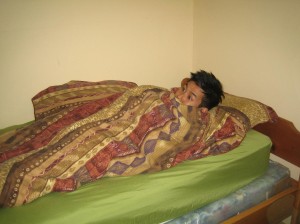In most cases, an individual with fever also feels cold. Fever and chills often occur together and can be a cause of concern to some individuals. The reason why an individual experiences chills during a fever is actually simple. In case the body temperature is higher than normal, the environment and air around will feel colder than it usually does.
Once there is an increased difference between the body temperature and the temperature in the environment than usual, the individual will feel colder. Take note that chills occur since the muscles rapidly contract and relax in an attempt to produce body heat. This occurs as a response to both cold air and an increase in the internal body temperature.
What you can do
Providing comfort to an individual with fever and chills can be difficult. The initial reaction of the individual to discomfort is to wear more clothes or use a blanket to feel warm. The issue with this is that bundling up under more layers will also increase the body temperature further.
Nevertheless, if the individual is evidently shivering or shaking due to chills, this can also increase the internal body temperature.

- Fever-reducing medications such as ibuprofen or acetaminophen can be given to reduce fever and provide comfort to the individual. On the other hand, these might take an hour to work, thus other measures must be provided.
- The individual should wear warm clothing but avoid bundling up. An additional blanket can be used to stop the shivering, but do not overdo this. Utilize the extra layers to provide comfort and then take them off. Do not bundle up a young child with fever but only dress him/her lightly and comfortably.
- Maintain proper hydration by drinking plenty of clear liquids if down with fever.
Do not panic
A vital thing to remember when an individual or child has fever is not to panic. Remember that fever is not characteristically dangerous. It is basically a natural defense against illnesses. It is simply the body’s way of fighting infection by making the environment in the body uninhabitable for germs.
In most individuals, there is no number on the thermometer that indicates danger or entails a trip to the emergency department. Just remember that an exception to this include infants below 3 months old and high body temperature triggered by exposure to hot environments.
Always bear in mind that fever and chills frequently arise together but they are not necessarily an issue to be concerned about. In case you are worried that the shivering or shaking could not be controlled or if it does not seem to stop once the fever is down, it is recommended to consult a doctor or seek immediate medical attention as soon as possible.
